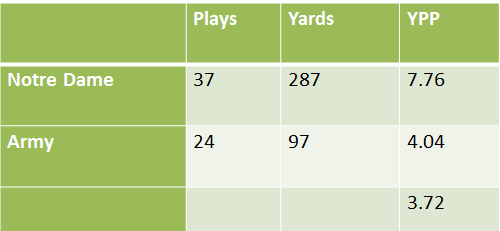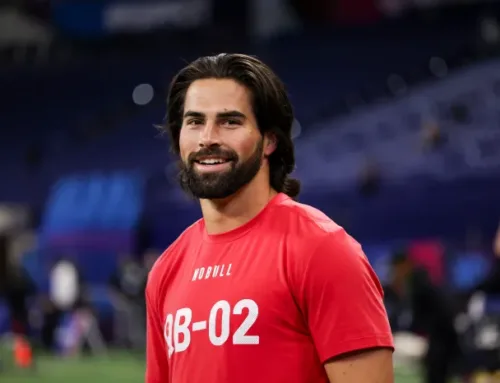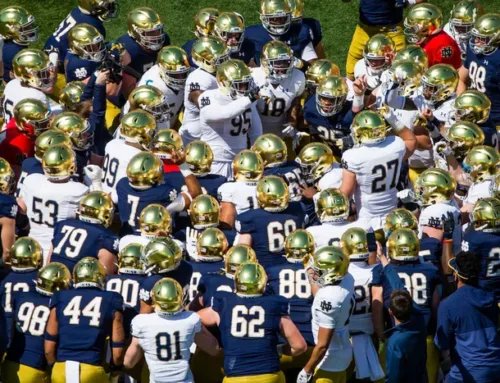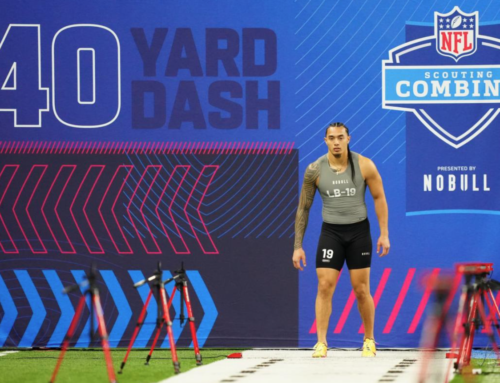A rare stress-free win for Notre Dame in 2016 reviewed using the Five Factors that lead to success in football. The Irish keep small hopes for bowl eligibility alive for another week.
Confused? Check out the advanced-stats glossary here.
Garbage time returns for only the third time this season! The first half was meaningful, the second not so much (by any definition a 32-point lead in the 2nd half is garbage). That was over half the plays in this game, so keep that in mind as you look at the stats below.
Explosiveness

This was a game where if you’d gone into a coma before the season, then woke up and watched the game on mute, you might think Notre Dame was in playoff contention. The offense, while not flawless, did pretty much whatever it wanted, and the defense looked fast and sound. Special teams were a non-disaster for the first time in weeks.
Offensively, this game was a nice encapsulation of DeShone Kizer as a QB prospect. On the plus side, he looked much more relaxed in the pocket, made some incredibly impressive throws, and ran the ball well. Still, his accuracy wasn’t consistent and there were a few head-scratching decisions, including the goal-line interception. It felt like a performance we would have salivated over last season, but the expectations have changed as Kizer morphed in 12 months from “redshirt freshman we hope can be competent” to potential 1st round draft pick.

Kevin Stepherson had another really nice game, and has cemented his status as the team’s 3rd leading receiver with a real shot at finishing 2nd in receiving yardage if Torii Hunter has limitations when he returns. The true freshmen just excels at setting up defensive backs and getting open with great route running, and he’s shown better than expected moves and burst after the catch as well.
Stepherson’s 19.5 yards per catch draws immediate comparison to big-play receivers like Will Fuller and Golden Tate (who had similar YPC numbers but much less production in their freshmen seasons). But statistically he’s having a year eerily similar to CJ Prosise’s 2014 season, where as a junior he became a big-play threat:
2016 Kevin Stepherson: 21 receptions, 410 yards (19.5 YPC), 4 TDs
2014 CJ Prosise: 29 receptions, 516 yards (17.8 YPC), 2 TDs
What appeared to be an open role in the offense with CJ Sanders name on it has now been filled by Stepherson, and it could be a battle for playing time moving forward with everyone having the option to return next season (miss you, spring Corey Holmes hype). Good problems to have!
Efficiency

Defensively, Army helped the Irish by doing a lot of things that Navy did not. The Black Knights committed several costly penalties, turned it over, and had several special teams miscues. They also didn’t block nearly as well on the perimeter, where Notre Dame defenders were able to take away angles to the sidelines and limit efficiency, which should spell death for an option offense.

A lot has been written about the defensive improvement post-BVG, but to me the biggest impact has been in limiting big plays, which the Irish did again on Saturday. The Irish defense is now 14th nationally in defensive IsoPPP, up from 76th in 2015. Factoring in the youth of the defense, that’s a pretty jaw-dropping number.
The gap isn’t quite as large when you adjust for opponents (31st in 2016 vs 57th in 2015), and we’ll see what happens against dangerous Virginia Tech and USC offenses. Stylistically, there’s been a slight increase in disruption and havoc rate – the Irish were virtually last in FBS in the four games under Van Gorder – but Notre Dame still has the lowest havoc rate (95th) of any team in the top 36 defenses of S&P+ (where the D is 30th). That tells me the Irish are really pulling off a successful bend but don’t break under Greg Hudson, which seems like a much better fit for this personnel anyway.
Field Position
Average Starting Field Position
Notre Dame – Irish 41
Army – Black Knights 25
With his third career kick return for a touchdown, CJ Sanders has now tied Allen Rossum and Tim Brown, and is two behind the Rocket for most in Notre Dame history. With two more seasons of eligibility, it seems pretty likely he’ll leave school with at least a tie for that record, and could threaten the total return touchdown mark (6, held by Brown and Ismail) as well if he can win back the punt return job.
On the kicking front, it was a lazy afternoon for Tyler Newsome and Justin Yoon. Stay sharp for the Hokies and Trojans boys, because every yard should count in those games.
Finishing Scoring Drives

We as fans stress a ton about red zone performance, but with most of the season in the books Notre Dame looks to finish with a fairly decent ranking for finishing drives. The Irish rank 41st in FBS, averaging 4.76 points per trip inside the opponents’ 40-yard line. Reminder: this is better correlated with year-to-year success than red-zone points per drive or touchdown %, which tends to be all over the place year to year and not a good predictor of success.
This game did mark a return of the old bugaboo of red zone turnovers though, which has improved drastically from 2015. Hopefully this marks more of an anomaly than start of the trend, because what tanked previous seasons’ red zone success was less play-calling or production, but coming away far too often with zero points due to turnovers (2014/15) or special teams blunders (2014).
Turnovers
One turnover was gained by each team, although both occurred in garbage time. Kizer’s interception rate (interceptions/attempts) hasn’t dropped quite as much as I would have hoped for in his sophomore campaign, going from 2.91% of throws in 2015 to 2.70% this season.
Without Will Fuller Kizer’s yards per attempt are down slightly (8.6 to 8.3), so as a result his passer rating is almost identical to last season. So the feeling that Kizer’s numbers aren’t much different than last season? It’s spot on. But the degree of difficulty has also increased substantially with drop-offs in protection, receiving talent, and ability to run the ball, which is why it feels so difficult to evaluate Kizer’s anticipated improvement.





Hi, garbage time!
That was a sneaky good receiving total from Prosise considering he wasn’t catching many balls that far down field.
Question: If you could make any 5 Factor from 2016 25% better next year what it would be?
Hmmm that’s a great question and a tough one. Honestly, all of our opponent adjusted ranks for offensive and defensive efficiency are really middling (30s-40s nationally), so hard to pinpoint one there. I’d probably say offensive explosiveness – if we could get back to 2015 levels with balance through the air and ground (which has been really weak with big plays, especially from RB), I think that lifts a lot of the burden off the QB (Kizer or otherwise) to put together sustained drives that have proven difficult. It’s also more fun to watch.
A close second would be if you can guarantee improvement in turnovers. Almost every other category on paper should get better next year, so the one I have the least confidence in (that could have a big impact) is finally having a strong positive turnover differential. If we could be +1 turnovers per game instead of -0.5 I’d feel really good about double-digit wins.